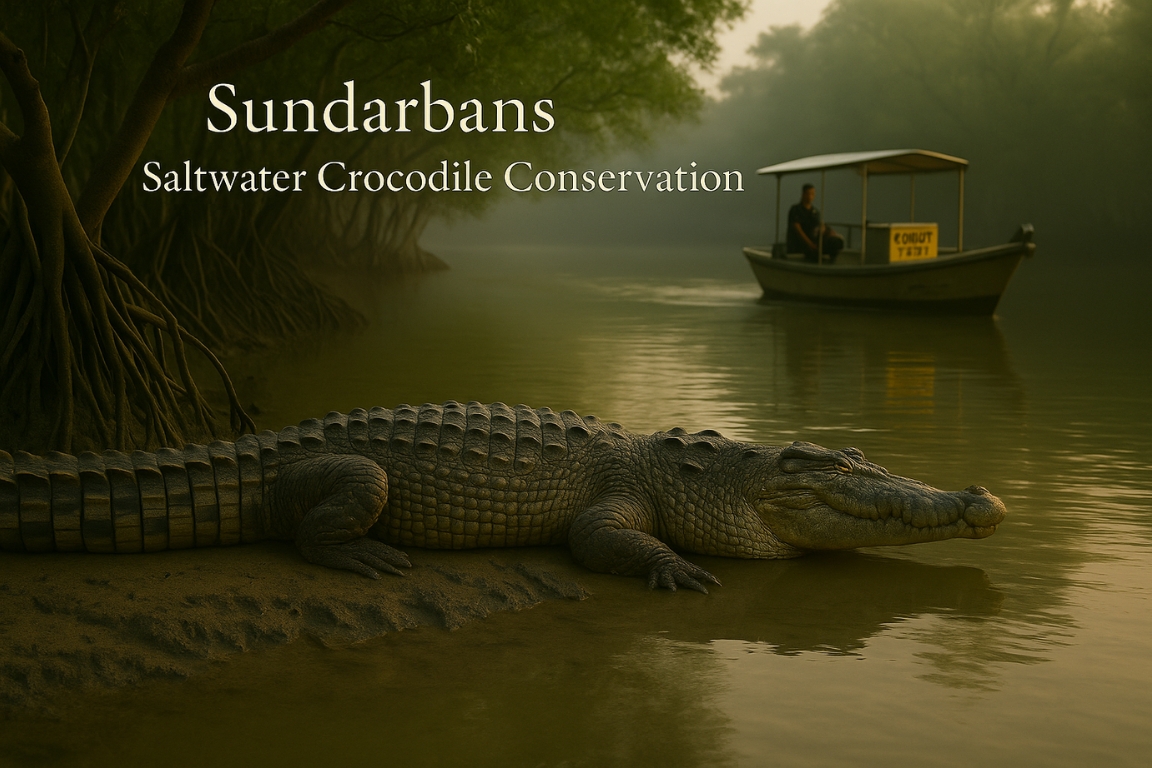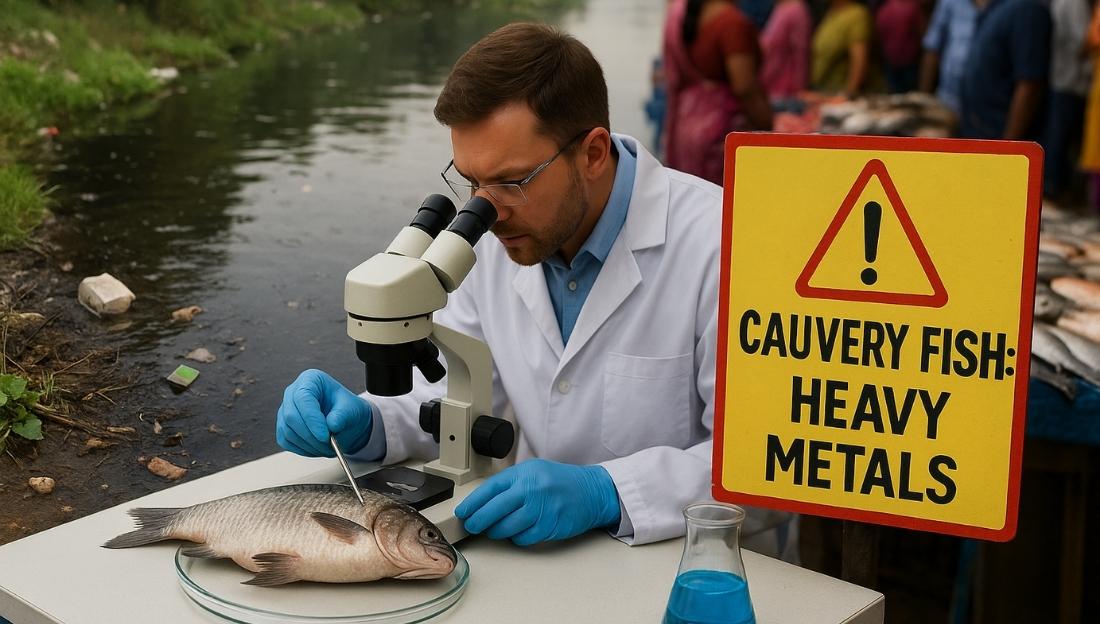A recent survey in the Sundarbans Biosphere Reserve reported a rise in the population and age diversity of saltwater crocodiles.
Significance of the Survey
- Shows population growth and healthy breeding patterns of saltwater crocodiles.
- Demonstrates the effectiveness of the Wildlife (Protection) Act, 1972 when paired with projects like the Bhagabatpur Crocodile Project.
- Highlights a shift in conservation priorities from only charismatic species to less popular but ecologically important species.

Role of Crocodiles in Ecosystem
- As apex predators, they regulate prey populations and remove carcasses, keeping waterways clean.
- Their presence reflects healthy mangrove and aquatic ecosystems in the Sundarbans.
- Better survival of young crocodiles indicates quality breeding habitats still exist despite human and climatic pressures.
Broader Ecological Importance
- Stability of crocodile populations may enhance the resilience of mangrove ecosystems against threats such as: Human encroachment. Frequent cyclones. Sea-level rise and erosion.
- Acts as an indicator species, showing that the delta’s food web is still functioning.
Policy Gaps and Concerns
- The Wildlife Act gives blanket protection but is reactive, not anticipatory.
- Climate change threats like rising salinity and habitat loss are not adequately addressed.
- Other reptile and amphibian species remain under-protected, often overshadowed by land-use and fishery concerns.
Lessons for Conservation
- Success came from institutional investment, not public affection for crocodiles.
- Similar targeted recovery plans are needed for other neglected species.
- Public communication strategies should highlight ecological importance of lesser-known species.
- Climate integration is critical: Saltwater crocodiles can adapt to varying salinity, but many freshwater reptiles cannot. Measures like assisted breeding and identifying climate refuges are necessary.
CROCODILES IN INDIA
India is home to three crocodilian species:
- Mugger Crocodile (Crocodylus palustris)
- Also called marsh crocodile.
- Found widely in freshwater habitats like rivers, lakes, and reservoirs.
- Distribution: Indian subcontinent (India, Nepal, Sri Lanka, Pakistan).
- Status: Vulnerable (IUCN).
- Saltwater Crocodile (Crocodylus porosus)
- World’s largest living reptile.
- Found in coastal areas, estuaries, and mangrove swamps.
- Distribution: Odisha (Bhitarkanika), Andaman & Nicobar Islands, Sundarbans.
- Status: Least Concern (IUCN), but protected in India.
- Gharial (Gavialis gangeticus)
- Has a long, narrow snout with sharp teeth.
- Strictly river-dwelling species.
- Distribution: Chambal, Girwa, Son, and other rivers in north India.
- Status: Critically Endangered (IUCN).
Major Crocodile Sanctuaries and Habitats in India
- Bhitarkanika National Park (Odisha) – famous for saltwater crocodiles.
- Crocodile Conservation Project (Crocodile Bank, Chennai, Tamil Nadu) – set up by Romulus Whitaker.
- Chambal River Sanctuary (Madhya Pradesh, Rajasthan, Uttar Pradesh) – important for gharial.
- National Chambal Sanctuary (Tri-state region) – gharial, mugger, and turtles.
- Satkosia Gorge Sanctuary (Odisha) – mugger crocodiles.
Conclusion
The rise in Sundarban crocodiles proves that inclusive conservation policies can safeguard overlooked species. India must adopt a broader approach that combines legal protection, habitat recovery, and climate adaptation to secure its diverse biodiversity





